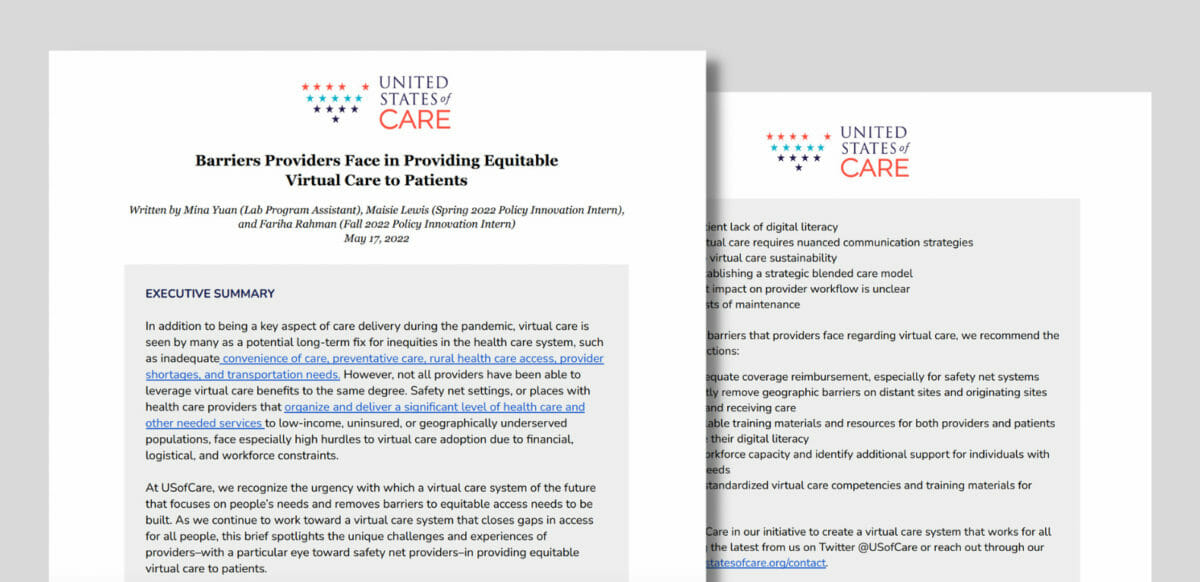Research, Resources, Virtual Care
Barriers Providers Face in Providing Equitable Virtual Care to Patients

EXECUTIVE SUMMARY
In addition to being a key aspect of care delivery during the pandemic, virtual care is seen by many as a potential long-term fix for inequities in the health care system, such as inadequate convenience of care, preventative care, rural health care access, provider shortages, and transportation needs. However, not all providers have been able to leverage virtual care benefits to the same degree. Safety net settings, or places with health care providers that organize and deliver a significant level of health care and other needed services to low-income, uninsured, or geographically underserved populations, face especially high hurdles to virtual care adoption due to financial, logistical, and workforce constraints.
At USofCare, we recognize the urgency with which a virtual care system of the future that focuses on people’s needs and removes barriers to equitable access needs to be built. As we continue to work toward a virtual care system that closes gaps in access for all people, this brief spotlights the unique challenges and experiences of providers–with a particular eye toward safety net providers–in providing equitable virtual care to patients.
Based on our preliminary research to date, including academic research, national polls, and our listening work through focus groups and one-on-one conversations with our Voices of Real Life members and other communities, we have identified the following barriers that providers face regarding virtual care, grouped into three broad categories:
- Barriers to virtual care adoption
- Expensive to establish
- Patient access to technology
- Patient lack of digital literacy
- Adapting provider workflows
- Barriers to providing quality virtual care
- Technology infrastructure and access
- Patient lack of digital literacy
- Virtual care requires nuanced communication strategies
- Barriers to virtual care sustainability
- Establishing a strategic blended care model
- Net impact on provider workflow is unclear
- Costs of maintenance
To mitigate these barriers that providers face regarding virtual care, we recommend the following policy actions:
- Ensure adequate coverage reimbursement, especially for safety net systems
- Permanently remove geographic barriers on distant sites and originating sites for giving and receiving care
- Make available training materials and resources for both providers and patients to improve their digital literacy
- Expand workforce capacity and identify additional support for individuals with complex needs
- Establish standardized virtual care competencies and training materials for providers
You can join USofCare in our initiative to create a virtual care system that works for all of us by following the latest from us on Twitter @USofCare or reach out through our website at unitedstatesofcare.org/contact.